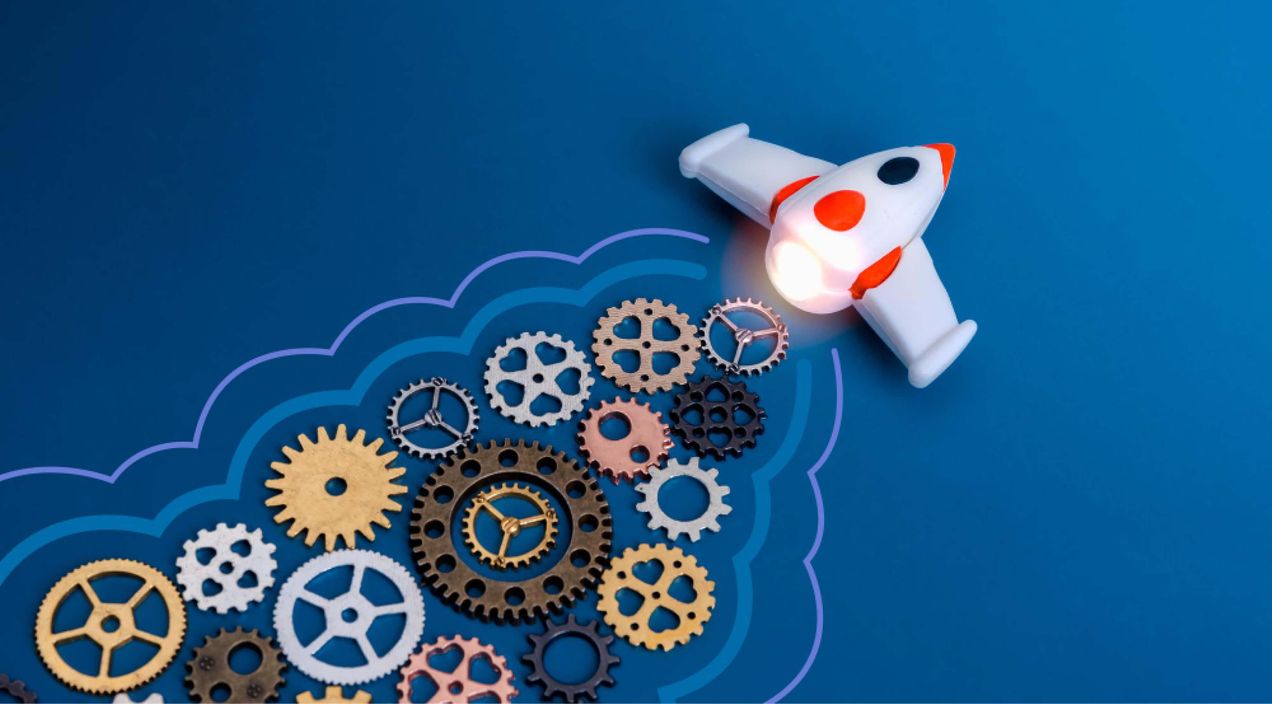What are employee assistance programs: Benefits and top examples to try in 2024

Employee well-being has become a crucial aspect of modern workplaces. Today's competitive landscape demands a focus on not just employee skills but also their overall mental and emotional health. In this context, Employee Assistance Programs (EAPs) have emerged as a valuable benefit offered by organizations to support their workforce.
This blog post delves into the world of EAPs, providing a comprehensive definition, exploring the multifaceted employee benefits programs they offer, and showcasing some of the most effective program examples to consider in 2024.
By understanding the core functionalities of EAPs and their positive impact, organizations can create a work environment that prioritizes employee well-being, fostering a more productive and engaged workforce.
Employee assistance programs: Definition

Employee assistance programs (EAPs) are workplace-based intervention programs designed to help employees address personal and work-related issues that may affect their job performance, health, and overall well-being.
These programs typically offer a range of services, including confidential counseling, mental health support, substance abuse treatment, and assistance with legal and financial concerns.
EAPs are intended to provide employees with timely and accessible support, helping them navigate challenges that might otherwise lead to decreased productivity, increased absenteeism, and higher employee turnover rates.
The primary goal of EAPs is to enhance employee resilience and productivity by addressing problems early on before they escalate into more serious issues. EAP services are often delivered through a combination of in-house professionals and external providers, ensuring that employees have access to specialized expertise.
These programs are confidential, ensuring that employees can seek help without fear of repercussions or stigma. By investing in EAPs, employers demonstrate a commitment to the well-being of their workforce, fostering a healthier, more supportive work environment that can lead to improved job satisfaction and organizational success.
How does EAP work?

Employee assistance programs (EAPs) operate through a structured process designed to provide employees with confidential support and resources for addressing personal and work-related issues. Here’s a breakdown of how EAPs typically work:
Access and referral
- Voluntary access: Employees can voluntarily access EAP services by contacting the EAP provider directly. This can be done through a dedicated phone line, email, or an online portal.
- Manager/supervisor referral: In some cases, managers or supervisors may refer employees to the EAP if they notice performance or behavioral issues that could be related to personal problems. Such referrals are usually handled sensitively and confidentially.
Assessment
- Initial assessment: Once an employee contacts the EAP, they undergo an initial assessment with a trained counselor. This assessment helps to identify the nature of the employee’s issues and determine the appropriate course of action.
- Confidentiality: All interactions with the EAP are strictly confidential. Information shared by the employee is not disclosed to the employer without the employee’s consent, except in cases where there is a risk of harm to the employee or others.
Intervention and support
- Counseling and support: Depending on the assessment, employees may receive short-term counseling and support directly from EAP counselors. This can include individual counseling sessions, family counseling, or group sessions.
- Specialized services: If the issue requires more specialized or long-term support, the EAP may refer the employee to external resources, such as mental health professionals, addiction treatment programs, legal advisors, or financial counselors.
Follow-up and monitoring
- Follow-up: The EAP may conduct follow-up sessions to ensure that the employee is progressing and to provide additional support if needed. Follow-ups help in maintaining the effectiveness of the intervention and addressing any ongoing issues.
- Feedback and evaluation: Employees may be asked to provide feedback on the services they received. This feedback helps the EAP to continuously improve its offerings and ensure high-quality support.
Employee assistance programs: 7 Top benefits

Employee Assistance Programs (EAPs) offer numerous benefits to both employees and employers. Here are seven top benefits that come as companies assist employees:
1. Improved mental health and well-being
EAPs provide employees with access to mental health resources, including counseling and support for stress, anxiety, depression, and other psychological issues. This support can lead to improved mental health and overall well-being, helping employees manage their personal lives and work-related stressors more effectively.
2. Increased productivity
By addressing personal issues that may interfere with work performance, EAPs help employees stay focused and productive. When employees have access to resources that help them manage their problems, they are less likely to be distracted or preoccupied at work, leading to enhanced productivity.
3. Reduced absenteeism
Employees dealing with personal or professional issues are more likely to take time off work. EAPs can help reduce absenteeism by providing early intervention and support, enabling employees to resolve issues before they escalate and require time away from work.
4. Lower turnover rates
Providing EAP benefits and services demonstrates that an employer cares about their employees' well-being. This can increase job satisfaction and loyalty, reducing turnover rates. Employees are more likely to stay with an organization that supports their mental and emotional health.
5. Cost savings
EAPs can lead to significant cost savings for employers by reducing healthcare costs associated with stress-related illnesses, lowering absenteeism, and decreasing turnover rates. Additionally, early intervention can prevent minor issues from developing into more serious, costly problems.
6. Enhanced work environment
EAPs contribute to a positive work environment by fostering a company culture one of support and care. When employees know that their employer is invested in their well-being, it can lead to higher morale, better team dynamics, and a more cohesive and supportive workplace culture.
7. Confidential support
EAPs offer confidential services, ensuring that employees can seek help without fear of stigma or repercussions. This confidentiality encourages more employees to take advantage of the services, leading to better outcomes for both individuals and the organization as a whole.
What are the various types of EAPs?
Employee Assistance Programs (EAPs) come in various forms, each designed to meet the specific needs of different organizations and their employees. Here are the main types of EAPs:
- Internal EAPs: These programs are managed and staffed by the organization's own employees. Internal member assistance programs typically have counselors, therapists, and other professionals on staff who provide direct support to employees. This type allows for greater integration with the company’s culture and a more personalized approach.
- External EAPs: External EAPs are provided by third-party vendors that specialize in offering EAP services. These vendors have a network of counselors and specialists who provide support to employees. Many organizations choose to partner with nearshore software development outsourcing companies to integrate EAP solutions efficiently while maintaining cost-effectiveness and operational flexibility. External EAPs are often chosen for their confidentiality, expertise, and the broad range of services they can offer.
- Hybrid EAPs: Hybrid EAPs combine elements of both internal and external programs. An organization may have an internal team that handles certain aspects of the EAP while using outsourcing strategy on other services to external providers. This approach allows companies to leverage the benefits of both internal familiarity and external expertise.
- Consortium EAPs: Consortium EAPs are shared among multiple small or medium-sized organizations. By pooling resources, these companies can afford comprehensive EAP services that might be too costly individually. This type of EAP is particularly beneficial for smaller organizations that want to provide robust support without the high expense.
- On-site EAPs: On-site EAPs have professionals physically present at the workplace. This can include on-site counselors or therapists who are available to meet with employees in person. On-site EAPs provide immediate, accessible support and can help create a culture of wellness within the organization.
- Telephonic and online EAPs: These EAPs offer services primarily through phone calls, video conferencing, and online platforms. They are convenient for employees who may prefer or require remote access to support, such as those working in different locations or with flexible schedules. Online EAPs often include resources like self-help tools, webinars, and virtual counseling sessions.
- Embedded EAPs: Embedded EAPs are integrated into other benefit programs offered by the employer, such as health insurance plans. These programs often provide seamless access to EAP services through the same channels employees use to access other benefits, making it easier for them to seek help.
Significance of employee assistance programs for small businesses

Employee Assistance Programs (EAPs) hold significant value for small businesses, playing a crucial role in fostering a healthy and productive work environment. Small businesses often operate with tight-knit teams where each member's contribution is vital.
When employees face personal or professional challenges, it can directly impact their performance and, by extension, the overall success of the business. EAPs provide confidential support and resources, helping employees address issues such as stress, mental health concerns, financial difficulties, and family problems.
This support leads to improved employee well-being, which in turn can improve employee retention and enhance productivity and morale.
Moreover, small businesses may lack the extensive HR resources of larger corporations, making it harder to address employee issues effectively. EAPs offer a cost-effective solution by outsourcing professional support, ensuring employees have access to necessary services without placing additional strain on internal resources.
Implementing an EAP can reduce absenteeism and turnover, which are particularly disruptive and costly for small businesses. It also demonstrates a commitment to employee welfare, fostering loyalty and job satisfaction.
By investing in EAPs, small businesses can create a supportive work environment that not only attracts and retains talent but also is employee engagement and drives long-term growth and stability.
5 Employee assistance programs examples to get inspiration from in 2024

Here are five exemplary Employee Assistance Programs (EAPs) from 2024 that can serve as inspiration:
1. Google's employee well-being program
Google's EAP is renowned for its comprehensive approach to employee well-being. It offers a wide range of services, including on-site mental health counselors, virtual therapy sessions, and a robust network of external mental health professionals.
Additionally, Google provides access to mindfulness and meditation apps, financial planning resources, legal and financial consultation, and legal assistance, ensuring employees have support for both personal and professional challenges.
2. Salesforce's employee success program
Salesforce has integrated its EAP into its broader Employee Success Program, emphasizing holistic support. The program includes mental health counseling, career coaching, and resilience training.
Salesforce also offers flexible work arrangements and extensive support for remote employees, such as virtual fitness classes and wellness webinars. This comprehensive approach helps employees maintain a healthy work-life balance.
3. Johnson & Johnson's live for life EAP
Johnson & Johnson’s EAP, Live for Life, focuses on promoting physical, mental, and emotional well-being. The employee assistance program also provides access to confidential counseling, wellness coaching, and stress management workshops.
Employees also benefit from health assessments, fitness challenges, and nutrition counseling. Live for Life is designed to support employees in leading healthier, more balanced lives, both at work and at home.
4. Deloitte's well-being at work program
Deloitte's EAP, part of its Well-being at Work initiative, offers a range of services tailored to the diverse needs of its employees. The program includes 24/7 access to confidential counseling, mental and health care, first aid training, and resilience-building workshops.
Deloitte also provides resources for financial wellness, including budgeting tools and debt management advice, helping employees achieve financial stability and peace of mind.
5. Microsoft's employee assistance and work-life program
Microsoft’s EAP combines traditional counseling services with a strong emphasis on work-life balance. Employees have access to virtual and in-person counseling, life coaching, and support groups.
The program also includes resources for parenting, elder care, and work-life integration, such as flexible scheduling and remote work options. Microsoft's EAP service is designed to support employees through various life stages and challenges, promoting overall well-being and job satisfaction.
FAQs
1. How confidential are EAP services?
EAP services are strictly confidential. Information shared by employees during counseling or other sessions is not disclosed to the employer without the employee's consent, except in cases of imminent harm or as required by law. This confidentiality ensures employees can seek help without fear of repercussions.
2. Are EAP services available to employee family members?
Yes, many EAPs extend their services to immediate family members, including spouses and dependents. This support can include counseling, legal assistance, peer support and financial advice, helping employees manage family-related issues more effectively and contributing to overall family well-being.
3. Is there a cost to employees for using EAP services?
EAP services are typically provided at no cost to employees. Employers cover the expenses of the program as a part of their benefits package, ensuring that employees and their families can access the support they need without financial burden.
4. How often can employees use EAP services?
Usage limits can vary, but most EAPs offer a set number of counseling sessions per issue or per year. Additional sessions may be available based on the specific program design or through referrals to other resources for continued support.
5. What types of issues can EAPs help with?
EAPs can assist with a wide range of issues, including stress, anxiety, depression, substance abuse, mental health issues, relationship problems, legal and financial concerns, federal occupational health and workplace conflicts. By addressing these issues, EAPs help employees maintain their well-being and productivity.



